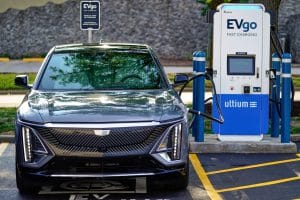- 🔒 The U.S. Department of Commerce has proposed a ban on Chinese and Russian vehicle software due to national security concerns.
- 🚗 The ban would target software and hardware in vehicles, especially those using Wi-Fi, Bluetooth, satellite, or cellular systems.
- 🕵️ Initial discussions began with a presidential investigation into Chinese vehicle software and cybersecurity risks.
- 🔍 Connected vehicles pose increased risks due to potential foreign interference in critical systems.
- 🇨🇳 Chinese officials argue the ban aims to suppress competition, not address security threats.
- 🏭 The ban could impact the import of Chinese vehicles, though current imports are limited.
- 📅 Proposed implementation dates are 2027 for software and 2030 for hardware in new vehicle models.
- 🛡️ High import tariffs on Chinese EVs have been introduced by the U.S., Canada, and the EU to protect domestic markets.
With the rise of connected vehicles in the automotive industry, the intersection of technology and national security has never been more apparent. The recent proposal by the U.S. Department of Commerce to ban Chinese and Russian vehicle software underscores significant concerns and implications for the future of the automotive world. This blog post delves into the intricacies of this proposal, exploring its potential impacts, underlying motivations, and future consequences.
The Proposal in Focus
The U.S. has formally set its sights on banning vehicle software and hardware originating from China and Russia, particularly those integrated into vehicles with systems like Wi-Fi, Bluetooth, satellite, or cellular technologies. With the increasing prevalence of electric vehicles (EVs), the connectivity factor raises eyebrows regarding national security threats.
Key Motivations
- National Security Concerns:
- At the heart of this proposal lies the concern for national security. The U.S. identifies significant risks in allowing foreign-made software and hardware access to critical systems within vehicles, fearing potential foreign interference.
- The proposal followed a comprehensive investigation initiated by President Joe Biden in March, focusing on Chinese software and associated cybersecurity risks.
- Domestic Industry Protection:
- Beyond security, this move can also be perceived as an effort to bolster the domestic automotive industry, particularly in the face of competitive pressures from Chinese manufacturers.
Implementation Timeline
The proposal outlines specific timelines for its execution:
- Software Ban: Set to be implemented for the 2027 model year vehicles.
- Hardware Ban: Scheduled for the 2030 model year vehicles.
Impacts of the Ban
Understanding the broader ramifications of this potential ban involves examining several layers.
On Automotive Industry
- Supply Chains:
- The ban could disrupt existing supply chains, requiring manufacturers to seek alternatives within allowable jurisdictions, possibly increasing costs and production times.
- Innovation and Technology:
- Limitations on technology sourced from China and Russia may impede innovation, particularly in areas like autonomous vehicle technology, where these countries play significant roles.
On International Relations
- Economic Tensions:
- Chinese officials have argued that the proposal is less about security and more about stifling competition, potentially igniting further trade disputes.
- Global Market Dynamics:
- The ban might encourage shifts in global automotive market dynamics, with countries looking to align their trade and security policies with or against the U.S. stance.
On Consumers
- Vehicle Availability and Costs:
- Consumers might face reduced vehicle options and potentially higher prices due to increased production costs and restricted imports.
Cybersecurity Challenges in Connected Vehicles
The underlying theme of this ban proposal is the vulnerability of connected vehicles to cybersecurity threats. As cars become more like connected devices, the risk landscape evolves:
- Data Privacy:
- Vehicles today are replete with technologies such as cameras, microphones, and GPS tracking, all of which can be weaponized if accessed by malicious actors.
- Critical Infrastructure Risks:
- With vehicles being linked to infrastructure networks, vulnerabilities could extend beyond personal threats, posing risks to national infrastructure integrity.
Conclusion
The U.S. Department of Commerce’s proposed ban on Chinese and Russian vehicle software and hardware embodies a significant shift in how national security concerns are addressed within the realm of technological integration. While the proposal seeks to safeguard national interests, it sparks critical conversations about global trade, innovation, and the future landscape of the automotive industry. As this proposal unfolds, stakeholders across the automotive sphere must stay abreast of developments, continually assessing the balance between security and progress.





